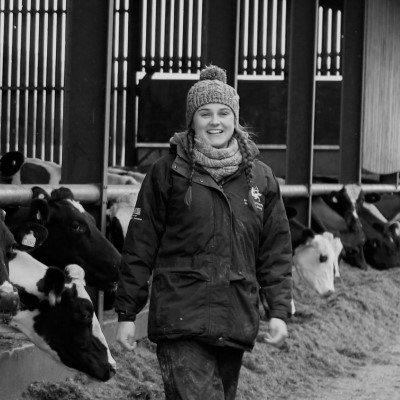CIEL | Blog: Reduce? Remove? Replace? Exploring the soya dilemma
Dr Fiona Short

On the one hand, soya is an effective feed. On the other, the negative environmental impact of key sources is widely acknowledged and continually scrutinised. This creates a quandary for feed businesses.
The bottom line is that soya is the main protein source in feeds, for pigs and poultry in particular. That’s been the case since the BSE crisis in the 1980s and 1990s, when soya replaced animal protein.
Why soya?
Soya contains a significant amount of protein and has a relatively good amino acid profile (bar methionine) in relation to poultry or pig requirements, so it was the obvious choice to replace animal protein and became established as the best widely available plant protein. For ruminants, soya, with its high digestible, undegradable protein content, also makes it the protein of choice. Soya also contains good levels of other essential nutrients and a considerable amount of energy, making it a very cost-effective feed source.
So, what’s the alternative?
The fact that soya is such a good raw material for animal feed makes it hard to replace despite years of research into this area. Possible alternatives include oilseed rape (OSR), Distillers grains (DDGS), peas, beans and lupins, plus the newer alternatives, insect and single celled protein. But there are clear hurdles to overcome for each of these:
OSR is an obvious replacement for ruminants but can lead to issues with product taste and reduced feed intake in poultry and pigs.
DDGS is also a suitable replacement, but regular supply in quantity can be an issue, and the fibre content can be problematic for poultry and pigs, necessitating the incorporation of feed enzymes.
Peas and beans are a good source of protein but the associated antinutritive factors restrict intake or utilisation of nutrients and so limit inclusion rates. Intake can be increased if hulls are removed but this increases costs and isn’t always economically viable. Also, these crops are prioritised for human consumption and so supply and quality cannot be guaranteed.
Insect and single celled protein appear to be another answer and have excellent nutrient content, but regular availability at volume will be a challenge to address and more work is needed to ascertain any limitations in terms of maximum inclusion rate and digestibility.
In soya, the nutrients are very digestible and available. Other sources of protein typically have lower digestibility values and energy content. This will make it essential to supplement diets containing these alternative proteins with more energy and other nutrients, such as calcium for cattle.
With all alternatives, price is a big issue: insect and single cellular protein in particular are currently too expensive to consider in practical rations. Other sources vary in price and availability, making it difficult to rely on them.
Where do we go from here?
My view is that we won’t see soya being replaced completely. I expect to see it combined with alternatives. But that’s also likely to see nutrients supplemented and feed additives included.
One of the most significant gains is likely to be by reducing inclusion rates, through precision feeding and supplementing diets with individual amino acids to make most efficient use of protein in the diet.
If you would like to learn more, please get in touch.

To find out more about our work, our projects and partnerships, choose a category from the list:

Dr Fiona Short, Innovation Manager – Nutrition
Working within the innovation team, Fiona provides scientific insight and translation of technical research to support industry members and help ensure its impact is realised across the supply chain.
Fiona has spent the majority of her career working in the animal health and nutrition industry, specialising in monogastrics, with over 17 years in research and a further six in industry.







